Ditapis dengan

Realibility of Nuclear Power Plants Volume 14
Since the 1970s, the field of industrial reliability has evolved significantly, in part due to the design and early operation of the first generation nuclear power plants. Indeed, the needs of this sector have led to the development of specific and innovative reliability methods, which have since been taken up and adapted by other industrial sectors, leading to the development of the management…
- Edisi
- -
- ISBN/ISSN
- 978-1-78630-761-3
- Deskripsi Fisik
- xxvii,260p.:illus.;24cm.
- Judul Seri
- -
- No. Panggil
- 621.483 LAN R
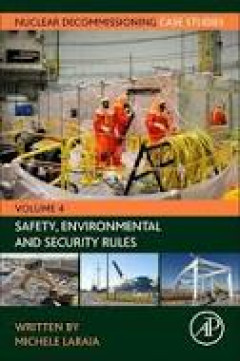
Nuclear Decommissioning Case Studies Safety, Environmental And Security Rules…
Nuclear Decommissioning Case Studies: Safety, Environmental and Security Rules, Volume Four in Michele Laraia’s series that presents a selection of global case studies on different aspects of Nuclear Decommissioning, focuses on the people side, including public perception, public relations and human factors. The book presents a selection of case studies on stakeholders, socioeconomics and mor…
- Edisi
- -
- ISBN/ISSN
- 978-0-323-91847-3
- Deskripsi Fisik
- xxxi, 341p.:illus.;24 cm
- Judul Seri
- -
- No. Panggil
- 621.483 LAR N

Nuclear Decommissioning Case Studies Organization and Management, Economics, …
Nuclear Decommissioning Case Studies: Organization and Management, Economics, Staying in Business, Volume Five delivers the latest volume in Michele Laraia's series, which presents a selection of global case studies on different aspects of nuclear decommissioning. This volume focuses on socioeconomics and performance indicators, offering guidance on project management, staffing, costs, and fund…
- Edisi
- -
- ISBN/ISSN
- 978-0-323-91847-3
- Deskripsi Fisik
- xxix, 431p.:illus.;24 cm.
- Judul Seri
- -
- No. Panggil
- 621.483 LAR N
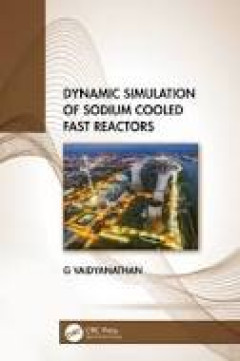
Dynamic Simulation Of Sodium Cooled Fast Reactors
This book provides the basis of simulating a nuclear plant, in understanding the knowledge of how such simulations help in assuring the safety of the plants, thereby protecting the public from accidents. It provides the reader with an in-depth knowledge about modeling the thermal and flow processes in a fast reactor and gives an idea about the different numerical solution methods. The text high…
- Edisi
- -
- ISBN/ISSN
- 978-1-032-25435-7
- Deskripsi Fisik
- xv, 256p.:illus.;24 cm.
- Judul Seri
- -
- No. Panggil
- 604 VAI D

Sustainability of Life Cycle Management for Nuclear Cementation-Based Technol…
Sustainability of Life Cycle Management for Nuclear Cementation-Based Technologies, edited by Dr. Rahman and Dr. Ojovan, presents the latest knowledge and research on the management of cementitious systems within nuclear power plants. The book covers aging, development and updates on regulatory frameworks on a global scale, the development of cementitious systems for the immobilization of probl…
- Edisi
- -
- ISBN/ISSN
- 978-0-12-818328-1
- Deskripsi Fisik
- xix, 653p.:illus.;24cm
- Judul Seri
- -
- No. Panggil
- 621.483 ABD S
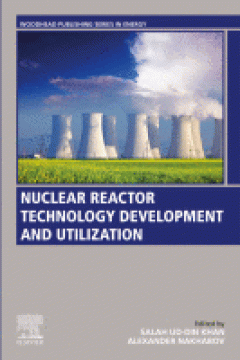
Nuclear Reactor Technology Development and Utilization A volume in Woodhead P…
Nuclear Reactor Technology Development and Utilization presents the theory and principles of the most common advanced nuclear reactor systems and provides a context for the value and utilization of nuclear power in a variety of applications both inside and outside a traditional nuclear setting. As countries across the globe realize their plans for a sustainable energy future, the need for innov…
- Edisi
- -
- ISBN/ISSN
- 978-0-12-818483-7
- Deskripsi Fisik
- xvi, 492p.:illus.;24cm
- Judul Seri
- -
- No. Panggil
- 621.483 UUD N
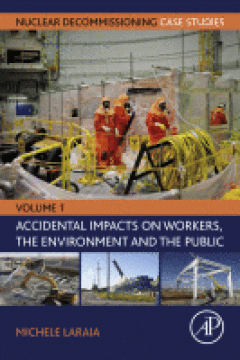
Nuclear Decommissioning Case Studies: Accidental Impacts on Workers, the Envi…
Nuclear Decommissioning Case Studies: Accidental Impacts on Workers, the Environment and the Public, Volume One presents a collection of international case studies that show impacts on workers, the public and the environment. Author Michele Laraia describes typical stages of decommissioning, such as categorization, hazard and risk analysis, and the risks and impacts involved at each stage. Each…
- Edisi
- 1
- ISBN/ISSN
- 978-0-12-823700-7
- Deskripsi Fisik
- xxxii, 464p.:illus.;24cm
- Judul Seri
- -
- No. Panggil
- 621.483 LAR A
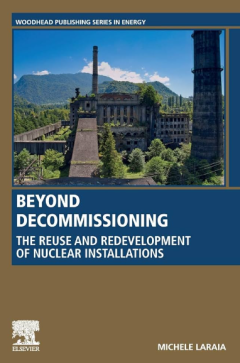
Beyond Decommissioning The Reuse and Redevelopment of Nuclear Installations
Beyond Decommissioning: The Reuse and Redevelopment of Nuclear Installations presents the most up-to-date research and guidance on the reuse and redevelopment of nuclear plants and sites. Consultant Michele Laraia extensively builds upon experience from the redevelopment of non-nuclear industrial sites, a technical field that has considerably predated nuclear applications, to help the reader ga…
- Edisi
- -
- ISBN/ISSN
- 9780081028759
- Deskripsi Fisik
- xiii, 393p.:illus.;24cm
- Judul Seri
- -
- No. Panggil
- 621.483 LAR B
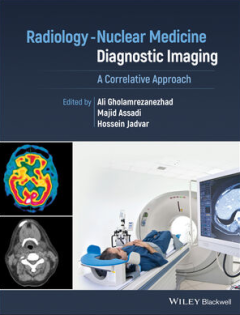
Radiology‐Nuclear Medicine Diagnostic Imaging: A Correlative Approach
Radiology-Nuclear Medicine Diagnostic Imaging: A Correlative Approach provides in-depth guidance on applying the principles of radiologic-nuclear medicine correlation to the interpretation of imaging for diagnostic, prognostic, and predictive indications. Describing the clinical implications of all major imaging modalities, this comprehensive professional reference offers one-stop coverage of t…
- Edisi
- -
- ISBN/ISSN
- 9781119603610
- Deskripsi Fisik
- xvii, 894p.:illus.;26cm
- Judul Seri
- -
- No. Panggil
- 616.07572 GHO R
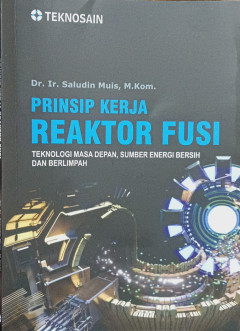
Prinsip Kerja Reaktor Fusi: Teknologi Masa Depan, Sumber Energi Bersih dan Be…
Dalam buku dijelaskan tentang limbah radioaktif PLTN dan pengelolaannya, termasuk teori disposal, tinjauan aplikasi disposal di dunia, serta potensi penerapannya di Indonesia. (AR)
- Edisi
- -
- ISBN/ISSN
- 9786026324870
- Deskripsi Fisik
- 178p.:illus.;25cm.
- Judul Seri
- -
- No. Panggil
- 621.042 MUI P
 Karya Umum
Karya Umum  Filsafat
Filsafat  Agama
Agama  Ilmu-ilmu Sosial
Ilmu-ilmu Sosial  Bahasa
Bahasa  Ilmu-ilmu Murni
Ilmu-ilmu Murni  Ilmu-ilmu Terapan
Ilmu-ilmu Terapan  Kesenian, Hiburan, dan Olahraga
Kesenian, Hiburan, dan Olahraga  Kesusastraan
Kesusastraan  Geografi dan Sejarah
Geografi dan Sejarah